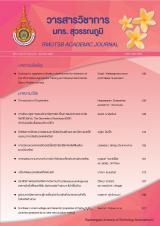Hydroponic vegetable cultivation development for extension at Luk Phra Dabos Agricultural Training and Development Center, Samut Prakan province
Main Article Content
Abstract
Hydroponic vegetable production in Thailand has been expanding every year. Farmers have turned to this technique realizing that it is easier to manage than the soil-grown, especially for temperate lettuce and herbs that are normally imported, and some other popular local crops. Under controlled conditions, the products are cleaner, safer and get a better price, which means much higher income for farmers. At the initial stage, hydroponic technology and equipment were all imported resulting with high capital cost. In order to lower the production cost, much effort has been put to replace imported items with local material. The objective of this research is to find hydroponic vegetable production systems suitable for extension program at Luk Phra Dabos Agricultural Training and Development Center. The research revealed that: 1) suitable systems for lettuce: were Nutrient Film Techniques (NFT) > Dynamic Root Floating Techniques (DRFT) > Deep Flow Techniques (DFT) > Aeroponics, for western herbs: they were NFT > DRFT > DFT, for popular native vegetable were DRFT > NFT > DFT and the substrate cultures technique was more suitable for fruit vegetables, 2) key success factors of hydroponic were good varieties, suitable production site, contract market and good management and, 3) farmers were advised to use the hydroponic system modified by using local materials for lower production cost and simple maintenance easily done by themselves.
Article Details
Published manuscript are the rights of their original owners and RMUTSB Academic Journal. The manuscript content belongs to the authors' idea, it is not the opinion of the journal's committee and not the responsibility of Rajamangala University of Technology Suvarnabhumi


